China’s Strategy in the Middle East from an Analytical Perspective
This analytical perspective addresses the ways and methods of Chinese engagement in the Middle East, building China's partnerships with various countries in that region. It also addresses the nature and future of China's presence in the region.
by STRATEGIECS Team
- Publisher – STRATEGIECS
- Release Date – Jul 7, 2022
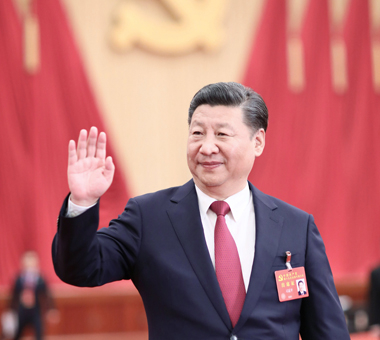
Introduction
The year 2016 witnessed a significant event in China-Middle East relations through a series of political moves by China. The most important of which was the first trip of Chinese President, Xi Jinping, to the Middle East (Saudi Arabia, Iran, Egypt, and the United Arab Emirates). Such visit had a great importance, where it came after a significant growth of Chinese economic engagement in the region, and sent a clear message to the region's countries expressing their importance to China.
In addition, Beijing's released the first Arab policy Paper on January 13, 2016, entitled "China's Policy Document on Arab Countries", summarizing China's vision for the region. One of the key issues included in that Paper is the formation of the cooperation equation (1+2+3), where the number 1 represents energy as a fundamental interest, number 2 represents infrastructure as well as trade and investments, while 3 represents the cooperation in the areas of nuclear energy, satellites, and new energy sources. This calls us to question why China is increasingly interested in the Middle East.
It is true that the previous analyses which addressed China's strategy in the Middle East are few, focusing only on the Chinese initiative on the "Belt and Silk Road" for obvious reasons, but paying less attention to China's relations with Middle Eastern countries on the one hand, and China's role in the complexities of the region on the other hand.
Therefore, this analytical perspective is seeking to identify the important elements of China's Middle East strategy, namely: the ways and methods of the Chinese engagement in the region, and in building its partnerships.
China’s Partnership Strategy
China's Policy toward the Middle East is necessarily defined in a complex regional context that involves many competitions between the region's countries on one hand, and the great powers on the other. So, China's strategy is concerned with maintaining a delicate balance, between many priorities that may -sometimes- conflict with each other.
In this regard, China dissociates itself from being a party to regional disputes or disputes; for example: it is keen to avoid siding with any party to the Iran-Saudi confrontation. China prefers to treat the Arab League as its main refuge for dialogue.
China's partnership strategy in the Middle East can be understood through two main themes, mentioned by Chinese professor and researcher Degang Sun in a study entitled "China's Partnership Diplomacy in the Middle East":
THE FIRST THEME: focuses on cooperation with Arab organizations in the region, such as the Gulf Cooperation Council, the Arab League and the Arab Maghreb Union.
THE SECOND THEME: focuses on the form of Sino-bilateral relations with the countries of the region, where China maintains comprehensive strategic relations with Algeria, Egypt, Saudi Arabia, Iran, and the UAE, while maintaining strategic cooperation with Turkey, a comprehensive partnership with Israel, and strategic relations with Qatar, Jordan, Iraq, Morocco, Oman, Kuwait, Djibouti and Sudan.
It is clear from the above that China's strategy is based on building individual relationships, without having a regional strategic vision. China seeks to build strategic partnerships, while significantly reducing security commitments or political positions in order to preserve its regional interests. It also seeks to maintain privileged bilateral relations with different countries, driven by objectives rather than threats, according to researcher George Strover, in a study published in The 2017 China Journal of International Policy entitled "China Partnership Diplomacy: International Consensus Based on Interests or Ideology," through China's agreement with various parties to cooperate within the boundaries of common interests while managing potential areas of competition.
In a 2019 study by the Center for Strategic and International Studies (CSIS), researcher John B. Alterman noted that China's Strategy in the Middle East is not so much a single regional strategy as an investment portfolio focusing China's national ambitions on economic relations with each country.
China's Focus is on Development, Rather Than Politics
The centrality of China's cooperation with The Middle East countries is reflected in the above-mentioned government document (China's policy document on Arab states), which stipulates China's commitment to developing its relations with Arab states, on the basis of the five principles of mutual respect for sovereignty and territorial integrity; non-aggression; non-interference in internal affairs; equality and mutual benefit; and peaceful coexistence.
According to a study by the Rand Research Center entitled "China in the Middle East: The Cautious Dragon", China is seeking to protect its economic interests in the Middle East aside from the regional disputes, this is why "it averts declaring any special strategy on the Middle East" so that China may focus on economic considerations, and address concerns at the local level of both: China and the Middle East.
China's principles in the region can be summarized as follows:
1. Non-interference is one of the overall principles of China's foreign policy, as China is careful not to view it as interfering in the domestic affairs of Middle East countries, or to take a clear position on some contentious regional issues.
2. China supports the Middle East's political structure stability. This is a lesson China learned after its economic interests in Libya were jeopardized by allowing UN Security Council Resolution 1970 to pass, which by turn allowed the Western intervention, that ended with the change of the regime of former Libyan President Muammar Gaddafi.
3. China is not interested in the nature of the region's ruling political systems, nor in the promotion of such regimes' ideologies abroad. China agrees with many countries in the region in their view of liberal and democratic calls, as instruments of Western countries.
Finally, what matters to China in the region, is to ensure the maximum security stability, as a key requirement for economic development, so that it can launch road, railway, port, telecommunications systems, and free commercial cities programs in a stable security environment. China has provided a $300 million economic assistance to develop the region's stability capabilities, as per to the 2018 China-Arab Executive Declaration on the Belt and Road Initiative.
Centrality of Economic and Development Cooperation
China's economy achieved its largest growth in foreseeable history over the past 25 years. It continues to achieve overall growth annually. Thus, China views the Middle East as a new market to support its economic growth and a source of energy needs. China's economic and development cooperation with Middle East countries can be read in three official Chinese documents:
The first document: China's Policy Towards the Arab States: 2016.
The second document: Vision and Procedures Plan, 2015, which included "the Belt and Road" Initiative, in addition to the Sea Silk Road for the 21st Century.
The third document: the Sino-Arab Executive declaration, 2018.
The framework of cooperation, explained in these documents, focuses on trade and investment in the Middle East, energy, and infrastructure construction.
1. Commerce
Trade relations between China and The Middle East have grown steadily over the past decade, a source of concern for industrialized countries, due to China's desirable partner for the abundance of its goods and the cheap prices.
According to the book "Foreign Policies of Major Asian Powers Towards the Arab Region" by Dr. Adnan Al Badrani, "it is the first time, since 2007, that the volume of Chinese trade exceeds the volume of U.S. trade with the countries of the region".
Both tables (1) and (2) show the volume of Chinese imports and exports compared to the volume of U.S. imports and exports to/from selected countries in the Middle East for 2018, according to China Med data and Project data, and USTR Office data, which regulates the trade policy in the United States:
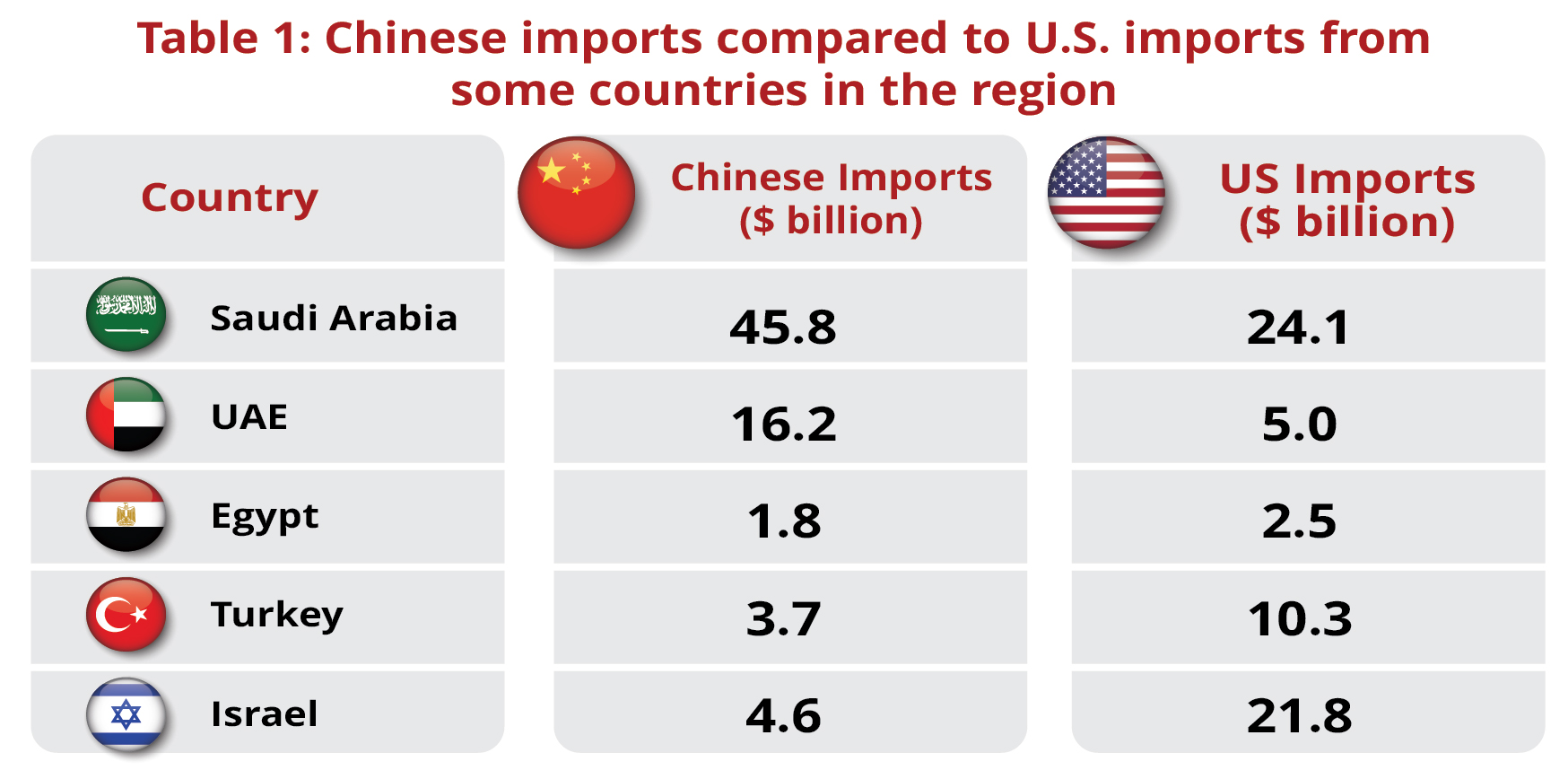
China is also the main export destination for several countries in the region; as shown in the table below:
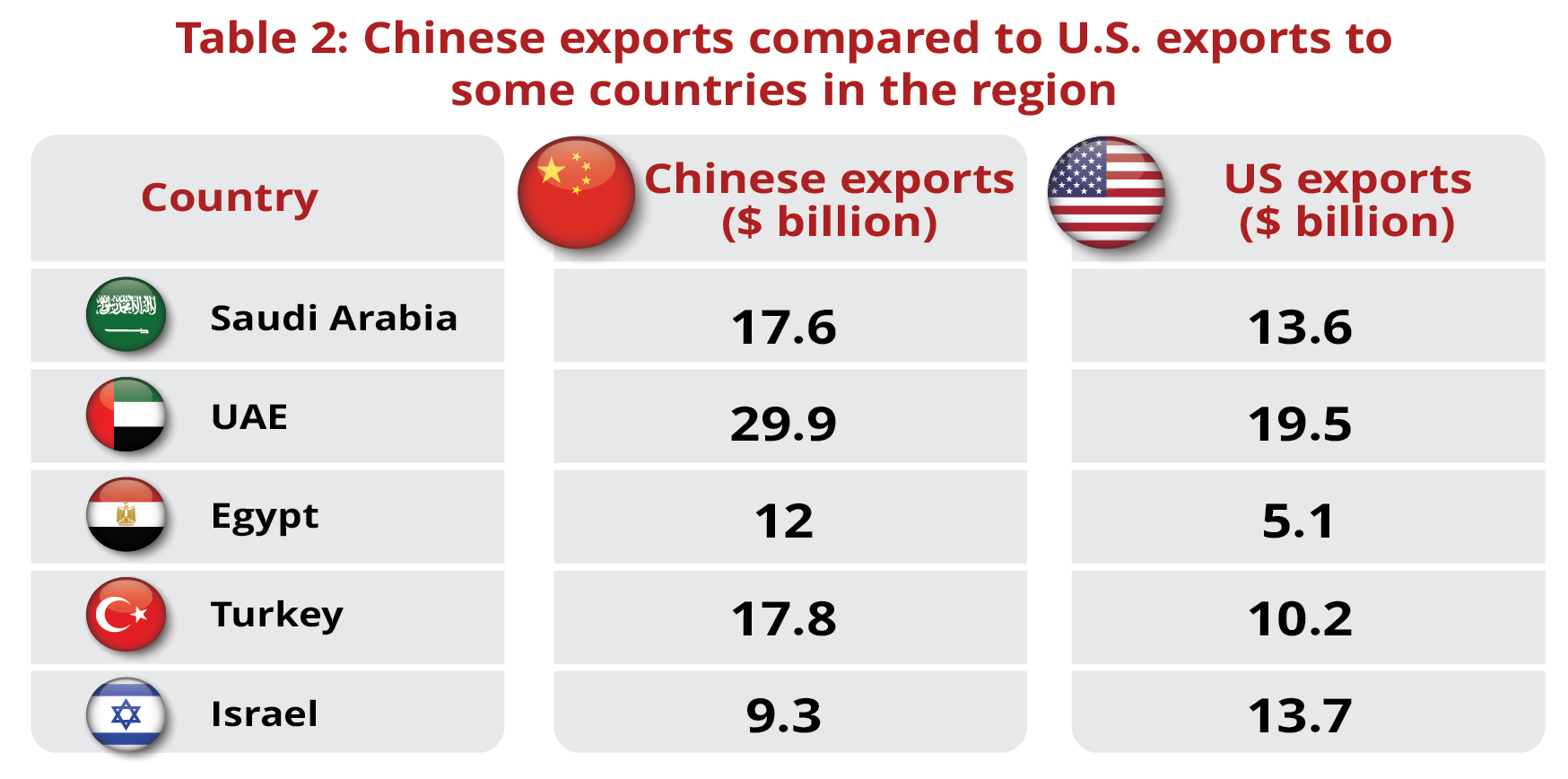
2. Chinese Investment in the Middle East
A series of Chinese projects and investments in the Middle East strengthened China's economic presence, making it a key part of Middle East economies. According to a 2020 report by American Enterprise; which talked about Chinese investments for 2019, China was able to increase its investment in the Middle East and North Africa region between 2005 and 2019 to $200 billion. China participates in many infrastructure projects across the region. According to estimates by MENA Pacs geopolitical platforms, nearly 75% of China's total investments in the Middle East are divided among three major countries: Egypt, Saudi Arabia, and the United Arab Emirates.
3. (Belt and Road) Impeded Vision
In 2013, Chinese President, Xi Jinping, announced plans to build the 21st Century Belt, Economic Road and Sea Silk, known as the "Belt and Road Initiative". This initiative is based on the construction of trade routes linking Asia, Europe, and Africa.
As such, the Middle East is of a great importance to China, where it links Europe, Africa, and The Asian markets. The Belt refers to several land projects linking China to Europe through Central Asia and the Middle East, while the Road refers to projects linked by sea routes, that link China with Africa and the Middle East across Southeast Asia and South Asia.
Chinese investment in the Middle East increased after Chinese President, Xi Jinping, announced the launch of the Belt and Road initiative in 2013, based on the Sino-Arab Executive Declaration on belt and road construction, issued in Beijing in 2018 on the construction of the Belt and Road, nine Arab countries have signed cooperation documents under the Belt and Road Initiative, in addition to the signing of five Arab countries to cooperate in the fields of production capacity, and also seven countries in the Arab region have become founding members of the Asian Infrastructure Investment Bank. According to NS Energy Business website, China's participation in in the Middle East's and North Africa's infrastructure development was doubled, with total annual spending on projects, involving Chinese contractors, rose from $13 billion in 2014 to $24 billion in 2018.
4. Economic Assistance
Apart from trade and investment, China began providing humanitarian and development assistance to countries in the Middle East and North Africa. According to the European Council for Foreign Relations (ECFR), China provided $100 million to the UN peacekeeping mission in Somalia since 2015.
In 2018, Chinese President, Xi Jinping, pledged about $106 million as an assistance to Middle Eastern countries, including $91 million in humanitarian and construction assistance to Jordan, Lebanon, Syria, and Yemen, as well as $15 million in aid to Palestine to support economic development, according to Reuters figures.
The Chinese president also pledged $20 billion as loans to some Arab countries, which come in the form of facilities for economic development, as well as cooperation in the fields of nuclear energy, oil, and gas.
In 2019, China provided Egypt with a $1.2 billion loan in order to help it build a 68-kilometer electric train, to reach the new administrative capital, according to the Global Construction Review.
5. Energy
Following China's rapid economic growth, its energy needs have increased, especially after its transition in 1993, from a country with its own energy production capacity to an importing country.
In 2017, China officially became the world's largest importer of crude oil, with total oil revenues exceeding total U.S. revenues, according to the U.S. Energy Information Administration. Because the Middle East region has an abundance of energy sources, one of China's most important interests in the region is its continued steady flow of energy resources.
According to available data for 2017, which were reported in the 2019 Report of the Economic and Social Commission for Western Asia (ESCWA), China imported about 8.4 million barrels of oil per day, of which 3.9 million barrels were from the Gulf Cooperation Council.
In 2018, Arab oil exports to China amounted to about $107.7 billion, 3 Arab countries were among the top five countries from which China imported its oil needs in the same year: Saudi Arabia (second place at $29.7 billion), Iraq (fourth with $22.4 billion) and Oman (fifth with $17.3 billion).
Future Vision: The Dilemma of Security and Development Balance in the Region
Accordingly, China's focus clearly appears to be on the development and mutual relations, as it tries to distance itself from regional differences and disputes. So, China's economic participation in the Middle East grew significantly over the past decade, becoming a major partner in some of Middle Eastern countries in the fields of trade and investment.
From a Chinese perspective, China's development in the Middle East is one solution to ensure a prosperous and securely stable region, which may theoretically be true. Whoever, the paratactical practice of seeing China in a region like the Middle East is more complex.
Thus, the increasing Chinese diplomatic and security activity in the region is becoming increasingly felt, despite China's concern that this could be at the expense of lives and money, and at the expense of its reputation as a friendly country, that respects the internal affairs of the countries of the region, and does not interfere in conflicts and disputes in the region.
Such engagement is in tandem with the Chinese aspirations in the region. China's economic participation, with some countries in the region, its growing interests therein, the scale of its vision for the Belt and Road Initiative, as well as the need to ensure the safety of Chinese residents in the Middle East, estimated at about 550,000 Chinese citizens, according to the Study of The Red Star and the Crescent by Georgetown University in Qatar, all come at a time when China is of less dependency on the security structure that Led by the United States of America, with the U.S. strategic shift toward East Asia. All these factors will lead to increased Chinese participation in Security and Politics in the Middle East.
China's political and security interventions in the region can be traced. According to the European Council on Foreign Relations (ECFR), China concluded partnership agreements with 15 Middle Eastern countries over the past years, to participate in anti-piracy and maritime security missions in the Arabian Sea and the Gulf of Aden.
In February 2016, China established its first overseas Chinese Liberation Army logistics support base in Djibouti; a military base equipped to accommodate nearly 10,000 troops, according to the Arab Policy Forum website. China soon plans to establish additional military bases in the Middle East, according to the Congressional Annual Report on Chinese Military Might 2019.
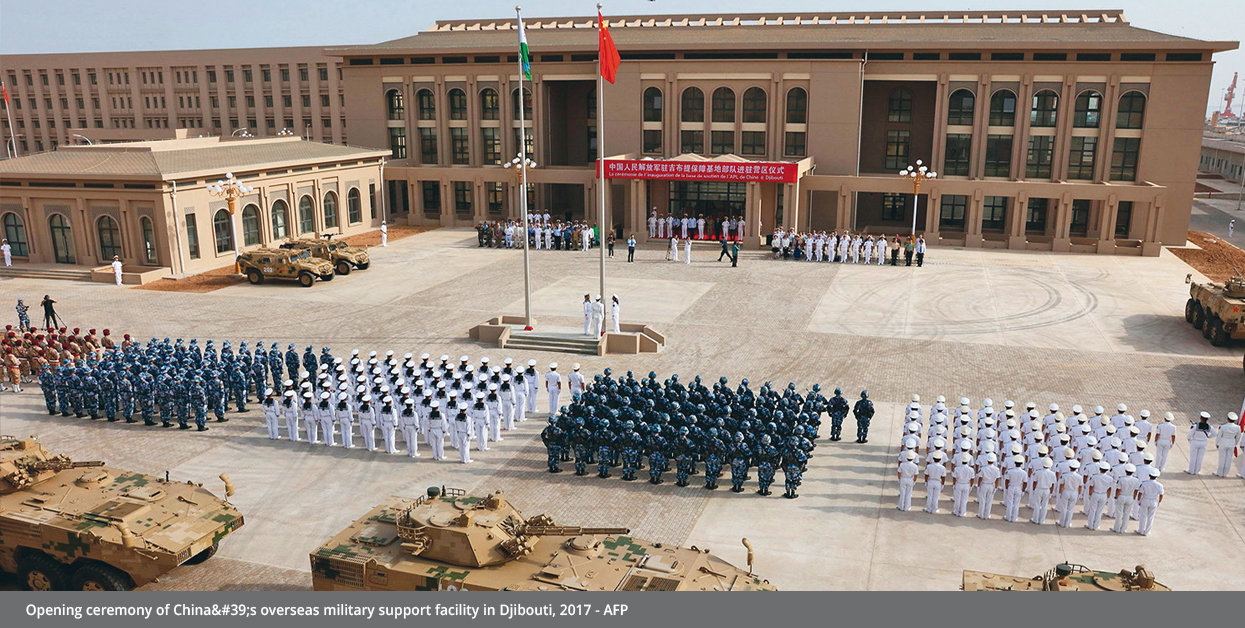
China is playing an increasing role in peacekeeping operations in the region. According to UN peacekeeping data; in 2019, there were 103 Chinese troops in South Sudan, in addition to 410 in Lebanon.
The 2017 China's Foreign Policy Experiment in South Sudan Report, described China's role in South Sudan as a major change in China's approach to non-interference in the region, through obtaining UN authorization for mediation and the protection of civilians, and approval from the African Union and neighboring countries.
Accordingly, China may find itself forced to play a security role in the Middle East, if it is to maintain the security of its trade routes and investments. Then, it will find itself faced with a problem, that contradicts the fundamental pillar of its foreign policy, which it declared in the 2016 China Policy Document on Arab States, namely, non-interference in the internal affairs of other countries, the principle of peaceful coexistence, and other five of the five principles mentioned in that document.
Chinese Role's Acclimatization in the Region with the Shocks
The outbreak of the Covid-19 pandemic was an integrated crisis at all levels. Arab countries, like the rest of the world, found themselves in the face of a health emergency, without a pre-prepared protocol to deal with this emerging crisis.
Because China was the first country to have the outbreak, it had advanced experience and knowledge of virus behavior, and shared this knowledge with Arab countries, either directly or through the world health organization, which is competent to coordinate international efforts to deal with epidemics.
China has also succeeded in reducing the production chain crisis that has undermined supply, particularly in some medical and preventive goods needed to cope with the virus. Thus, China exported a model to contain crises, not just exporting its products.
Throughout 2020, Chinese business entities fulfilled their full contractual obligations, with the exception of those related to compelling conditions, such as the pressure on shipping and closures, which were able to meet the growing demand from some Arab states.
China has also succeeded in supplying sufficient quantities of its vaccines to the Arab countries that requested this. Since at the beginning of the crisis, China engaged in a "geopolitical race" to manufacture and export vaccines to countries around the world, as one of the first countries to face the outbreak of the virus, in addition to considerations of multi-pronged competition with the United States. The two countries engaged in "Covid 19 diplomacy" and thus in "vaccine diplomacy" in a sign of the politicization of the pandemic.
The Arab region was not fully recovered from the pandemic, until a crisis with no less severe geopolitical and economic impacts erupted. Moscow announced the start of what it called a "special operation" in Ukraine in February 2022, and similarly from the Corona pandemic, Arab countries turned their attention to China to monitor their interaction with the crisis and determine the Sino-Russian relations degree of cohesion.
The Ukrainian crisis led to a sharp rise in oil prices, amid fears of severe supply shortages, and the expansion of the conflict toward new countries Such uncertainty increased Chinese interest in ensuring the flow of oil from the Arabian Gulf region, at a time when U.S. coordination dynamics with its oil-exporting allies in the region have slowed, namely Saudi Arabia, the UAE, which has stuck to OPEC+ agreements in the face of U.S. and Western demands for increased oil production.
At the height of the rise in oil prices, the Wall Street Journal claimed in March 2022 that Riyadh had invited Chinese President Xi Jinping to visit Riyadh.
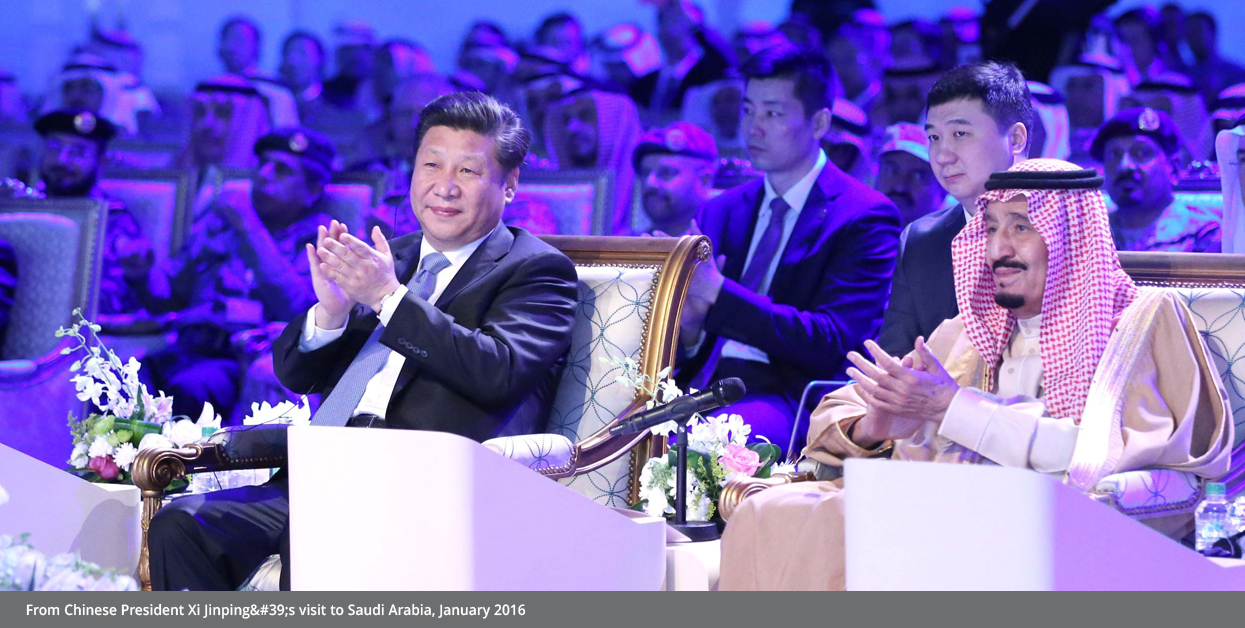
It is clear from these two crises -Corona pandemic and the Ukrainian crisis-that China's role provides a buffer to the countries of the region, in the face of any severe pressures they may be subjected to, it also gives space to maneuver and expand the list of options away from the former U.S. unilateralism in regional action as a single superpower.
Nevertheless, Beijing, along with the region's capitals, realizes that Washington remains the only one with security and military assets that enable it to shape events and define rules and red lines, unlike China, which remains a "strategic alternative" to its presence in a region, crowded of conflicts and entrenched U.S. influence.
Conclusion
Having said that, it is clear that China's ambitions are increasing in the Middle East, playing a greater role in a region that attaches strategic importance. China's vision seems to be clear-cut, and in line with its bilateral relations in the region, particularly within the framework of economic cooperation priorities.
China's approach is also important regarding China's understanding of the Middle East region. Such approach is consistent China's behavior with distancing itself from interference in conflicts and differences in the region, where China demonstrates its eagerness not to interfere in the delicate and volatile regional system, and also maintains balanced relations with all opponents in the region, without distancing any of the major regional players and without threatening the gains it has made.
In many respects, China's interest in the Middle East is purely economic, with the Belt and Road Initiative playing a key role in China's foreign policy in the region, as well as China's reliance on energy resources from the Middle East as the world's most populated country, with the world's second largest economy. China has enormous energy requirements.
Finally, the future suggests significant changes in China's policies toward the region. This comes as the security vacuum that a relative U.S. withdrawal from the region may create, which is to increase China's focus on its vital interests. This means that China will need to secure its own trade and investment in the Middle East, the matter that also suggests that it should increase its security, military, and diplomatic participation in the region's complexities and conflicts, in parallel with its pursuit of the Middle East. to keep their vital interests safe.
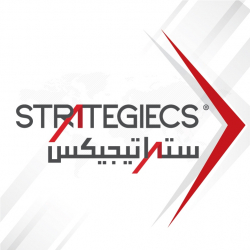
STRATEGIECS Team
Policy Analysis Team
 العربية
العربية